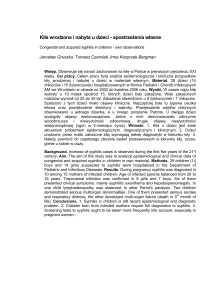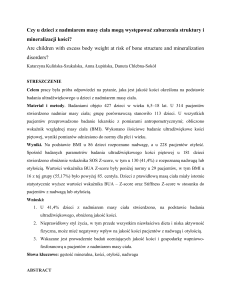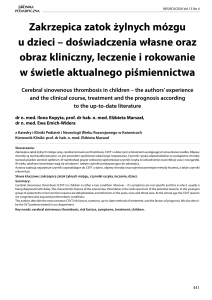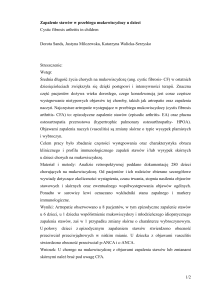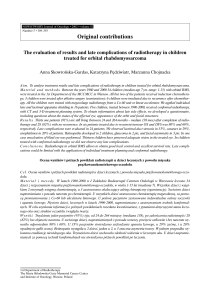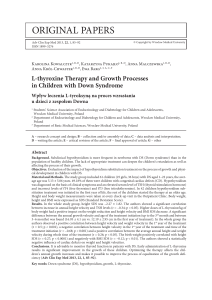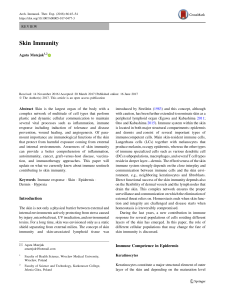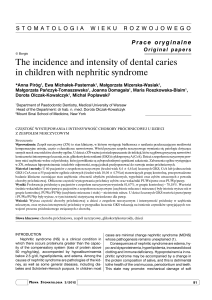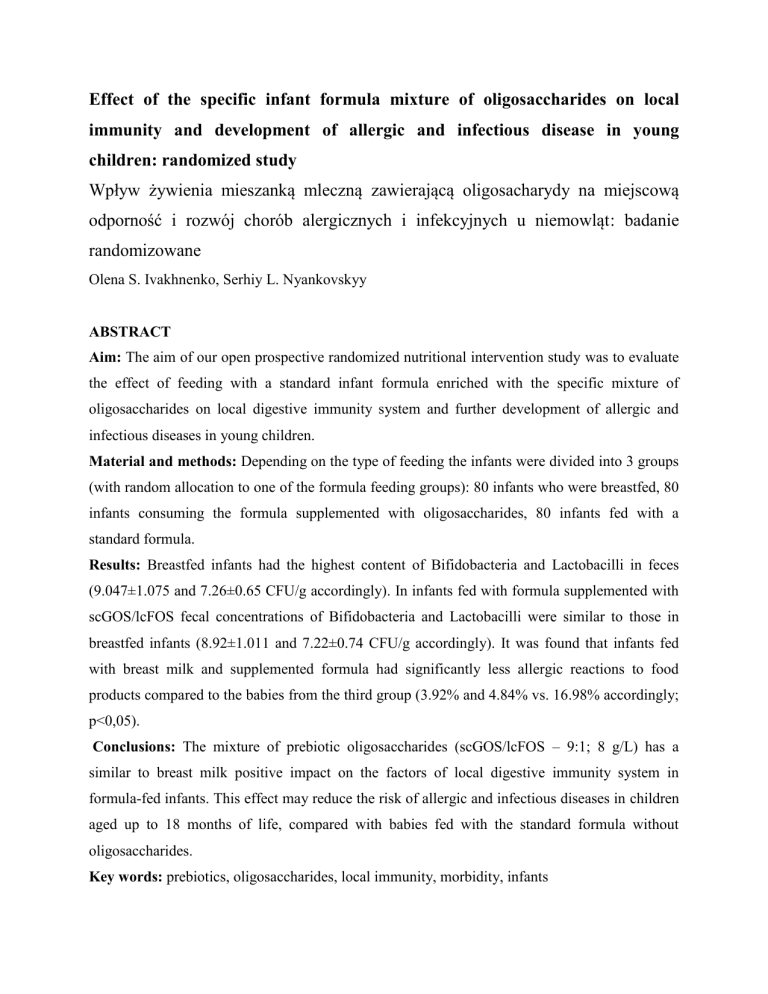
Effect of the specific infant formula mixture of oligosaccharides on local
immunity and development of allergic and infectious disease in young
children: randomized study
Wpływ żywienia mieszanką mleczną zawierającą oligosacharydy na miejscową
odporność i rozwój chorób alergicznych i infekcyjnych u niemowląt: badanie
randomizowane
Olena S. Ivakhnenko, Serhiy L. Nyankovskyy
ABSTRACT
Aim: The aim of our open prospective randomized nutritional intervention study was to evaluate
the effect of feeding with a standard infant formula enriched with the specific mixture of
oligosaccharides on local digestive immunity system and further development of allergic and
infectious diseases in young children.
Material and methods: Depending on the type of feeding the infants were divided into 3 groups
(with random allocation to one of the formula feeding groups): 80 infants who were breastfed, 80
infants consuming the formula supplemented with oligosaccharides, 80 infants fed with a
standard formula.
Results: Breastfed infants had the highest content of Bifidobacteria and Lactobacilli in feces
(9.047±1.075 and 7.26±0.65 CFU/g accordingly). In infants fed with formula supplemented with
scGOS/lcFOS fecal concentrations of Bifidobacteria and Lactobacilli were similar to those in
breastfed infants (8.92±1.011 and 7.22±0.74 CFU/g accordingly). It was found that infants fed
with breast milk and supplemented formula had significantly less allergic reactions to food
products compared to the babies from the third group (3.92% and 4.84% vs. 16.98% accordingly;
p<0,05).
Conclusions: The mixture of prebiotic oligosaccharides (scGOS/lcFOS – 9:1; 8 g/L) has a
similar to breast milk positive impact on the factors of local digestive immunity system in
formula-fed infants. This effect may reduce the risk of allergic and infectious diseases in children
aged up to 18 months of life, compared with babies fed with the standard formula without
oligosaccharides.
Key words: prebiotics, oligosaccharides, local immunity, morbidity, infants
STRESZCZENIE
Cel: Celem otwartego prospektywnego randomizowanego badania była ocena efektu karmienia
standardową mieszanką mleczną, wzbogaconą specyficzną mieszanką oligosacharydów na
miejscową odporność przewodu pokarmowego, a także dalszy rozwój chorób alergicznych i
zakaźnych u dzieci.
Materiał i metody: Badane niemowlęta podzielono na 3 grupy: 80 niemowląt było karmionych
piersią, 80 niemowląt ‒ sztucznie z dodatkiem oligosacharydów, 80 niemowląt ‒ mieszankami
bez oligosacharydów (randomizacja u dzieci karmionych sztucznie).
Wyniki: Niemowlęta żywiące się mlekiem matki miały najwyższą zawartość bakterii
Bifidobacterium i Lactobacillus w kale (9,047±1,075 i 7,26±0,65 CFU/g odpowiednio). U
niemowląt karmionych sztucznie z dodatkiem oligosacharydów ilość bifidobakterii i
Lactobacillus w kale była podobna do dzieci karmionych piersią (8,92±1,011 i 7,22±0,74 CFU/g
odpowiednio). Niemowlęta, które były karmione mlekiem matki i mieszankami z dodatkiem
oligosacharydów, istotnie rzadziej miały reakcje alergiczne (3,92% i 4,84% vs. 16,98%, p<0,05).
Wnioski: Stosunek oligosacharydów (scGOS/lcFOS ‒ 9:1; 8 g/L) w mieszankach sztucznych jest
podobny do występującego w mleku kobiecym i zapewnia właściwą zawartość bakterii
probiotycznych. Podobnie jak mleko kobiece ochrania przed wystąpieniem alergii i chorób
zakaźnych do 18. miesiąca życia.
Słowa kluczowe: prebiotyki, oligosacharydy, lokalna odporność, zachorowalność, niemowlęta

